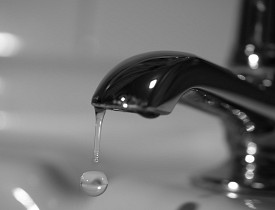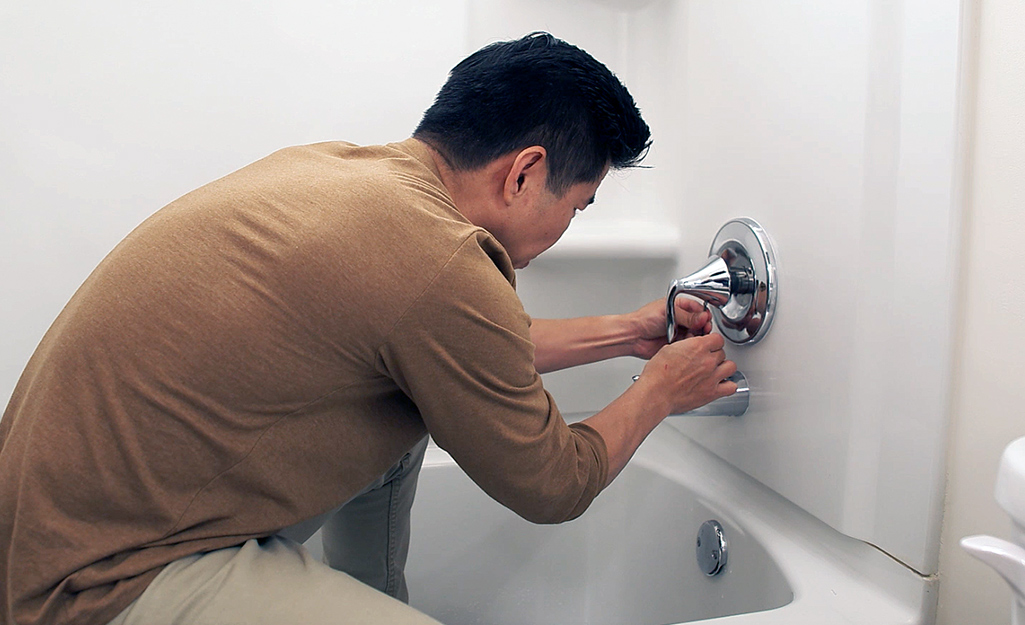What It's Essential to Resolve a Faulty Faucet
What It's Essential to Resolve a Faulty Faucet
Blog Article
Have you been searching for related information concerning What Causes Leaky Faucets & How To Fix Them?

Dripping taps may feel like a minor aggravation, however their impact surpasses simply the inconvenience of the audio. From drainage to incurring unnecessary economic costs and health and wellness dangers, overlooking a dripping faucet can lead to different consequences. In this write-up, we'll explore why it's essential to resolve this common family concern immediately and efficiently.
Wastefulness of Water
Environmental Impact
Leaking taps contribute dramatically to water wastefulness. According to the Environmental Protection Agency (EPA), a solitary faucet leaking at one drip per secondly can throw away more than 3,000 gallons of water per year. This not only strains water resources but also affects communities and wildlife dependent on them.
Financial Costs
Enhanced Water Bills
Beyond the environmental impact, dripping taps can inflate water bills substantially. The accumulated wastage over time translates right into greater energy expenses, which might have been prevented with timely repairs.
Potential Building Damages
In addition, prolonged dripping can cause damage to components and surfaces surrounding the faucet. Water buildup can trigger discoloration, corrosion, and also architectural issues if left ignored, causing additional repair work expenses.
Wellness Worries
Mold and Mold Growth
The constant visibility of moisture from a trickling tap creates a suitable environment for mold and mildew growth. These fungis not just compromise interior air high quality but additionally position health and wellness risks, specifically for individuals with breathing problems or allergies.
Waterborne Diseases
Stationary water in trickling faucets can come to be a breeding place for bacteria and various other pathogens, raising the danger of waterborne conditions. Pollutants such as Legionella bacteria prosper in stationary water, potentially causing major ailments when ingested or breathed in.
Do it yourself vs. Expert Fixing
Advantages and disadvantages of DIY Repair Work
While some may try to deal with a dripping faucet themselves, DIY repair services come with their very own collection of obstacles. Without proper understanding and devices, do it yourself efforts can intensify the problem or cause insufficient fixings, lengthening the trouble.
Advantages of Hiring an Expert Plumber
Working with a specialist plumber guarantees that the underlying reason for the leaking tap is addressed properly. Plumbings possess the competence and devices to identify and repair faucet problems efficiently, conserving time and decreasing the threat of additional damages.
Step-by-Step Guide to Fixing a Dripping Tap
Devices Required
Prior to trying to repair a trickling tap, gather the required tools, consisting of an adjustable wrench, screwdrivers, replacement components (such as washers or cartridges), and plumber's tape.
Typical Faucet Issues and Their Solutions
Identify the type of faucet and the details problem triggering the drip. Usual troubles consist of worn-out washers, corroded valve seats, or defective O-rings. Refer to producer guidelines or on-line tutorials for detailed assistance on repairs.
Preventive Measures
Routine Maintenance Tips
To prevent dripping taps, do regular maintenance such as cleansing aerators, checking for leaks, and changing damaged parts immediately. In addition, think about installing water-saving gadgets or updating to much more reliable fixtures.
Relevance of Prompt Services
Attending to dripping taps as quickly as they're observed prevents additional water waste and potential damages, eventually conserving both water and money over time.
Effect On Property Worth
Assumption of Well-Maintained Residential Property
Maintaining a building in good condition, including addressing upkeep problems like trickling taps, enhances its perceived worth and charm amongst possible customers or lessees.
Influence on Resale Worth
Features with well-maintained plumbing components, consisting of faucets, command greater resale values in the realty market. Attending to leaking taps can add to a favorable impression throughout home inspections and settlements.
Environmental Obligation
Private Contribution to Preservation
Taking duty for repairing trickling taps lines up with broader initiatives toward water conservation and environmental sustainability. Every person's actions collectively make a considerable influence on protecting valuable sources.
Sustainable Living Practices
By focusing on punctual repair services and embracing water-saving practices, people add to sustainable living techniques that profit both existing and future generations.
Final thought
Addressing a trickling faucet goes beyond plain convenience; it's an important step toward saving water, decreasing financial costs, and guarding health and wellness and home. Whether through DIY repairs or professional support, doing something about it to deal with leaking taps is a little yet impactful way to promote accountable stewardship of resources and contribute to a much healthier, a lot more lasting future.
How to Fix a Dripping or Leaky Faucet
A leaking faucet is one of the most common problems that homeowners encounter, but it being commonplace doesn’t make it any less annoying. The constant drip drip drip of a leaking bathtub faucet, showerhead, or sink tap can disturb your home’s serenity. Left neglected, a dripping faucet can also result in higher water bills and discoloration or mold growth in your sink or plumbing fixtures.
Fortunately, you don’t have to be a trained plumber to know how to stop a dripping faucet. With some basic tools, replacement parts, and a little patience, leaky faucet repair is a breeze. In this article, we’ll explain what causes dripping faucets and how you can fix them.
What Causes a Leaking Faucet?
Kitchen and bathroom faucets come in all manner of designs, but most involve some combination of valves, O-rings, seals, and washers. The O-ring is usually the weakest link, but any one of these pieces can wear down over time. Heat, moisture, temperature fluctuations, minerals, mold, and movement can contribute to warping and corrosion, breaking the watertight seal. This just comes with the territory of being a homeowner. Everything is always subject to wear and tear, and some component parts of your appliances and fixtures need to be replaced on occasion. At least replacement O-rings are cheap!
More rarely, dripping faucets can be a symptom of excessively high water pressure. Were this the case in your home, you would probably notice that the leak is not isolated to one faucet. Water pressure issues are harder to resolve on your own. We recommend contacting a professional plumber if you suspect your water pressure is too high.
How to Fix a Dripping Faucet
Pipe wrench or monkey wrench Allen wrench set Screwdrivers Old towel or rag Shut off the water.
Before you do anything, you need to turn off the water to keep from drenching your kitchen or bathroom. You should find a valve under the sink and against the wall. Once you’ve turned this valve, try turning the faucet on to confirm that the water source has been cut off.
If you can’t locate your local valve for the faucet you’re working on, you can always shut off the water to the house at the main valve. Of course, this will prohibit anyone from using the sinks, showers, or toilets while you’re working on the faucet that’s giving you trouble.
Plug or block the drain.
You’ll be disassembling the faucet and removing some small bits of hardware. Plug the drain with a stopper or rag to avoid the possibility of a small screw falling into your P-trap.
Take apart the faucet assembly.
There are several varieties of kitchen and bathroom faucets, each with its own manner of assembly. For detailed instructions on how to disassemble your faucet, you can refer to the fixture’s manual or contact the manufacturer. If you know whether you have a ball, disc, cartridge, or compression faucet, you can find detailed schematics online.
In general, you need to begin by removing the faucet handles. You might notice a small screw that you’ll need to remove with a screwdriver or Allen wrench. If you don’t see any visible securing hardware, it’s likely hidden under a decorative cap that can be unscrewed or popped off with flathead screwdriver.
Remove each piece methodically, consulting a schematic when necessary. Take notes or arrange the pieces in such a way to make it easier to correctly reassemble the faucet later.
Remove the cartridge.
Once you’ve removed the handles and securing hardware, you should be able to remove the valve cartridge or stem. Some cartridges will slide right out. Other faucet models will require you to loosen a nut with a pipe wrench before you can remove the valve stem.
Examine the exposed hardware.
With the cartridge or stem removed, inspect the component parts. Check the rubber O-rings for wear and tear. Also examine the seat washer for corrosion or other damage. These pieces are usually the responsible parties for a dripping faucet, but it’s worth inspecting the other component parts while you have the faucet disassembled.
Find replacement parts.
Once you’ve identified which faucet component has failed, find an identical replacement. Your local hardware store should have O-rings, seat washers, and other standard components in stock. If you have a luxury or uncommon faucet, you may have to contact the manufacturer for a replacement part.
It’s a good idea to take your old parts with you to the hardware store so you can compare them with the store’s inventory and be sure you’re purchasing the correct replacement.
Reassemble the faucet.
With your new parts in hand, reconstruct the faucet and handles. Don’t be tempted to overtighten screws or nuts. You might think this could create a better seal, but it can instead damage or bend a delicate part of the assembly and create a new problem for you.
Turn on the water and test the faucet.
The only thing left to do is test your work. Unplug the sink, turn the water back on, and try the faucet. Congratulate yourself on a job well done!
https://www.libertyhomeguard.com/how-to-fix-a-dripping-or-leaky-faucet/

I hope you liked our excerpt about Why It's Important to Fix Leaky Faucets. Thank you so much for taking time to read through our short article. Enjoyed our posting? Please share it. Help others locate it. Many thanks for being here. Revisit us soon.
Report this page